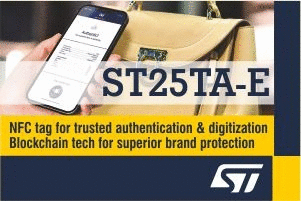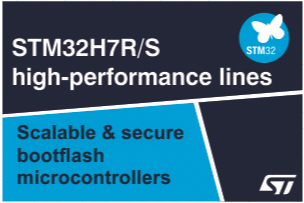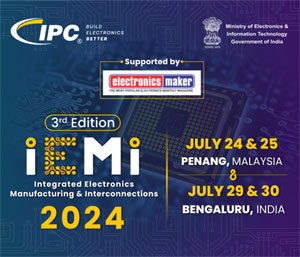When assembling LED installed lighting fixtures, the mounting techniques are the critical considerations as well as the LED characteristics. However good the LED’s characteristics may be, improper mounting method/conditions might significantly affect their characteristics, sometimes resulting in catastrophic failure. This article will explain considerations in reflow process with High Power LEDs.
Reflow soldering has established itself as a valid industry standard worldwide for the contacting and mounting of SMD components. The essential process step in reflow soldering is always the concerted melting of a previously applied solder deposit (paste) in a through-type oven. Technically, the most consistent possible heating of a board is achieved by forced convection of hot air or nitrogen.
Surface mount LED soldering to a circuit board can be a bit tricky. However, it can be accomplished with only the basic soldering tools, and does not require any advanced or expensive machinery. Normally, surface mount led soldering to a circuit board requires the application of solder paste to the circuit board pads by using a solder paste stencil. Then the surface mount LEDs would be placed onto the pads, resting on top of the solder paste. In the final step for surface mount led soldering to a circuit board, the boards are passed through a reflow oven, where the temperature will normally reach in excess of 200 degrees Celsius. As the boards pass through the oven and reach the peak oven temperature, the solder paste will begin to reflow. The reflow process occurs only during a brief period as the boards pass through the oven. Before the actual reflow process, the boards are carefully brought up to the reflow soldering temperature range, as they go through the first area of the reflow oven. The time in the oven and temperature are both important aspects when working with surface mount led soldering to a circuit board. The process just described for surface mount led soldering to a circuit board, can be fully automated, or semi-automated, depending on the complexity of the machinery utilized.
Surface mount led soldering to a circuit board is very different from through-hole soldering. The plated holes in the circuit board will help transfer the heat. However, to achieve a good solder joint, the surface temperature of your LED lead must reach a certain point. This means that you may need to hold your iron tip onto the soldering surface a bit longer, to allow both metal surfaces to heat up and accept the solder.
The LEDs can be soldered using the parameters listed below. As a general guideline, the users are suggested to follow the recommended soldering profile provided by the manufacturer of the solder paste. Although the recommended soldering conditions are specified in the list, reflow soldering at the lowest possible temperature is preferred for the LEDs.
LED Assembly Reflow Oven A600 by Shenzhen ETA Electronic Equipment Co., Ltd.
Heating System
- Eight groups of top and bottom forced hot air convection heating zones.
- Patented heating plates in each zone uniformly transfer heat to the PCBs using forced hot air convection.
- Independent temperature control in each zone to ensure temperature uniformity within the process tunnel.
- Power consumption savings of 1/3 as compared to other systems.
- Patented motorized blower in each zone is designed to ensure stable air pressure, withstand high process temperature and is disturbance-free.
- Audible and light tower alarm for temperature limits and blower malfunction.
- Fast start-up (within 20 minutes) from room temperature to work temperature due to the high efficiency of the motorized heating plates.
Cooling System
- Two (2) groups of air fans convection cooling zones.
- Mesh belt conveyor system
- Closed-loop computer control of the conveyor provides a precise and repeatable reflow process.
- Control System
- PC control system with windows based control
- Lenove Computer and Siemens PLC
Additional Features
- Integrated UPS will be automatically activated in case of main power failure and will keep control PC and conveyor running for minimum 5 minutes to send out PCBs inside the oven tunnel.
- Three (3) profiling ports and integrated profiling software are designed for convenient temperature profiling.
- Swing arm control PC station
- Two (2) emergency stop switches
- Two (2) exhaust port
VP260 Vapor Phase Soldering Oven from Manncorp
The precise, defect-free characteristics of vapor phase soldering have made it the soldering choice for military, aerospace, and medical equipment applications. Manncorp makes vapor phase technology affordable for all types of production with three affordable vapor phase reflow ovens. Solder complex, temperature sensitive SMT assemblies in the safest, most reliable way with reflow that takes place at only 5° to 10° over the melting point of the solder paste—lower soldering temperatures means less component stress and no delaminating or pop-corning. Manncorp’s vapor phase soldering ovens are suited for prototyping through medium volume PCB assembly. The VP260 is Manncorp’s vapor phase reflow oven recommendation for OEMs and contractors who maintain a high flexibility, low-to-medium-yield solder processing capability. This is the right machine for high mixes, short runs and fast changeovers that can be either lead or lead-free. Setup only involves loading the board holder which accepts PCBs of 11.8″ x 10.2″ (300 x 260mm), and activating a switch. No guesswork or downtime is involved since profiling is pre-determined by the boiling point of the fluid used. Or in special situations, dwell time can be preset by operator and stored in the system’s memory. Processing is equally rapid, with soldering taking place as boards are indexed into the vapor phase zone when boiling point of fluid and melting point of solder are simultaneously reached. Boards are then indexed to cooling zone where evaporation dries and brings board to ambient temperature. Features
- Automatic or time-controlled lead-free or lead soldering.
- Ergonomic front-loading design for easy access.
- Two process chambers for processing and cool-down with internal air-lock separation.
- Program storage with standard soldering programs included.
- Dual-rail adapter unit for double-sided boards included.
- Optional rework package includes component pickup mechanism for quick and simple desoldering and removal of ICs and BGAs from boards.
- Automatic in/out carrier. Observation window into process chamber.
- Fluid recovery system.
- Heat exchanger (chiller) is available.
- Low energy (16A) and minimal fluid consumption. No compressed air used.
- Compact bench-top unit occupies just 29″ x 28″ (760mm x 720mm).
- Accepts PCBs up to 11.8″ x 10.2″ (300mm x 260mm). Can simultaneously process multiple PCBs within this area.
Conclusion
Reflow ovens are 1 of the basic module of any SMT line. Unlike other electronic components LEDs have special specifications to be considered while undergoing reflow process. This article has stated few technological aspects of LED reflow and suitable products. Thank you.









